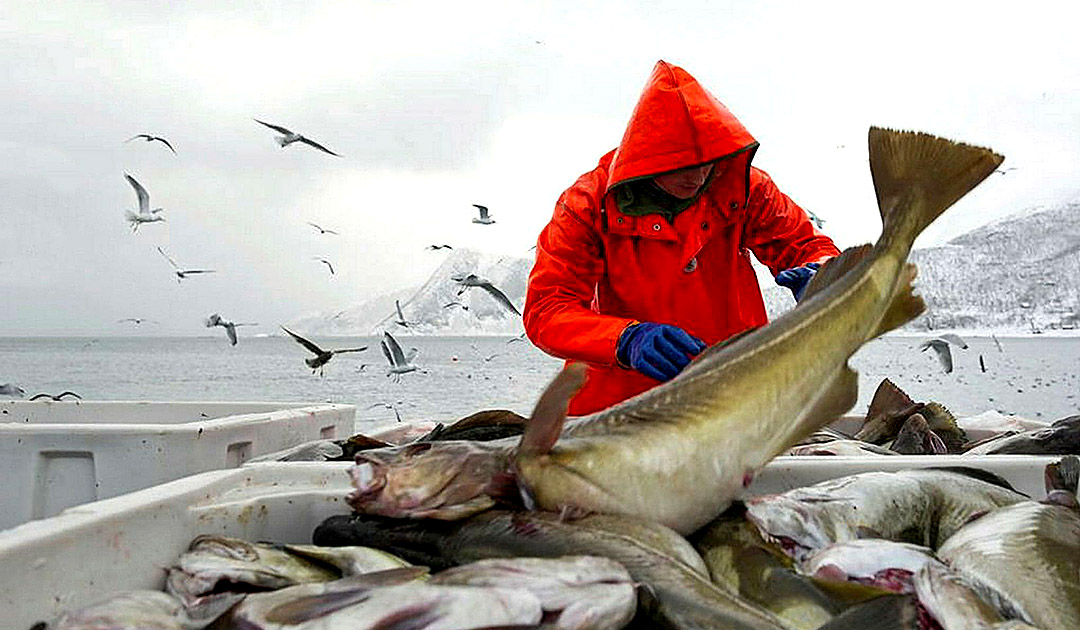
Little is normal currently in economic relations between European countries and Russia. Despite all this, joint Norwegian-Russian management of the Barents Sea has proven to be a successful model for sustainable fisheries. Norway wants to maintain this agreement despite the sanctions against Russia. But this threatens to become a security risk. Meanwhile, Norway has increased security around all critical infrastructure and ports. In addition, Norway intends to renegotiate fishing rights in the Barents Sea.
The government, under pressure from recent events, is tightening rules on where Russian fishing boats are allowed to land. Only the three ports of Kirkenes, Tromsø and Båtsfjord will still be open for this. In addition, controls by customs and police are to be strengthened. The government said it was taking into account the “changed situation after the Nord Stream sabotage.”

In the northern Norwegian ports, people have long since become accustomed to Russian fishing trawlers. The Barents Sea with its rich fishing grounds is basically on the doorstep. Norway has had a fisheries agreement with Russia on the management of the Barents Sea for almost fifty years.
The cooperation has been a resounding success and has never been questioned until now. It has meant that cod stocks previously threatened by overfishing have recovered well. Russia and Norway usually have shared the quota equally. The agreement allows Russian ships to change crews and much more. In addition, it is noted that it provides a source of revenue for the Russian fishing industry.
The cooperation also offers risks
But after the explosions at the Nord Stream 1 and 2 gas pipelines in the Baltic Sea, some in Norway are asking whether it is a good idea to continue to allow Russian fishing boats unrestricted access to Norwegian ports and coastal zones. It is also not possible to check if the boats have other missions than catching fish.
Representatives of the Norwegian opposition demanded that the government tighten sanctions against Russia. Norway generally supports the EU’s policy and has also closed its ports to most Russian ships. But not for the fishing boats.

The “cable mystery” is a warning signal
As the security situation in Europe has worsened, it has become more difficult for the government to prioritize the sustainable fisheries argument it has made to date. For now, an industry that is even more important to the country than fisheries, namely the petroleum industry, is becoming the focus of hybrid threats.
Norway has done a lot to make its installations operationally safe, but far too little to protect them against threats such as sabotage, a security expert recently wrote in the newspaper Aftenposten.

NRK journalists were following up on a story when the connection off Vesterålen was broken in April 2021. NRK called the incident the “cable mystery.” It involves two incidents in which the 66-kilometer submarine cable to several subsea platforms was cut and 4.3 kilometers of it disappeared without a trace. The largest part of the 9.5 ton submarine cable was found months later eleven kilometers from its original position.
Another incident occurred only 8 months later. In January 2022, one of the two data cables from Svalbard to the Norwegian mainland was suddenly cut.
Without being able to draw definitive conclusions, the broadcaster maintained that in both cases three Russian fishing boats were on the scene at the time of the events.
Whether these three ships were actually players in the “cable mystery” is hard to determine. However, they may well have been used for such purposes under Russia’s current doctrine, various parties and experts in Norway believe. With the new, stricter control measures against Russian fishing vessels, the government in Oslo hopes to get the problem under control.
Heiner Kubny, PolarJournal
More on the topic





